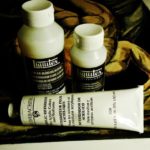
Glazes have been around since the days of the Renaissance oil painters. These painters developed the technique of painting a monochromatic underpainting. Over that painting, they would apply glazes, which are very thin layers of transparent color. Imagine that the glaze is a colored film that you apply over a black and white photograph. The […] Read more »





